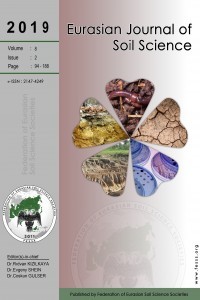
Eurasian Journal of Soil Science
Yazarlar: Elham KALANTARİ, Alimorad HASSANLİ, Gholam Abbas GHANBARİAN, Ali Asghar GHAEMİ, Sayed Roholla MOUSAVİ
Konular:Fen
DOI:10.18393/ejss.335328
Anahtar Kelimeler:Salinity,Desalination wastewater,Bioremediation,Irrigation with wastewater,Halophytes
Özet: The expansion of arid and semi-arid areas and consequently water scarcity are affected by climate change. This can influence on availability and quality of water while demands on food and water are increasing. As pressure on freshwater is increasing, utilization of saline water in a sustainable approach is inevitable. Therefore, bioremediation using salt tolerant plants that is consistent with sustainable development objectives might be an alternative and effective approach. In this study, saline wastewater from a local desalination treatment plant was utilized to irrigate four halophyte plants, including Aloevera, Tamarix aphylla, Rosmarinus officinalis and Matricaria chamomilla. A field experiment was designed and conducted in Zarrindasht, south of Iran in years 2012-2013 accordingly. Two irrigation treatments consisting of freshwater with salinity of 2.04 dS.m-1 and desalination wastewater with salinity of 5.77dSm-1 were applied. The experiment was designed as a split plot in the form of randomized complete block design (RCB) with three replications. The results of variance analysis, ANOVA, on salt concentration in Aloevera showed that there was no significant difference between the effects of two irrigation water qualities except for Na. In Rosmarinus officinalis, only the ratio of K/Na showed a significant difference. None of the examined salt elements showed a significant difference in Tamarix aphylla irrigated with both water qualities. In Matricaria chamomilla, only Mg and K/Na ratio showed a significant difference (Duncan 5%). As a result, no significant difference was observed in salt absorption by the examined plants in treatments which were irrigated by desalination wastewater and freshwater. This could be a good result that encourages the use of similar wastewater to save freshwater in a sustainable system.